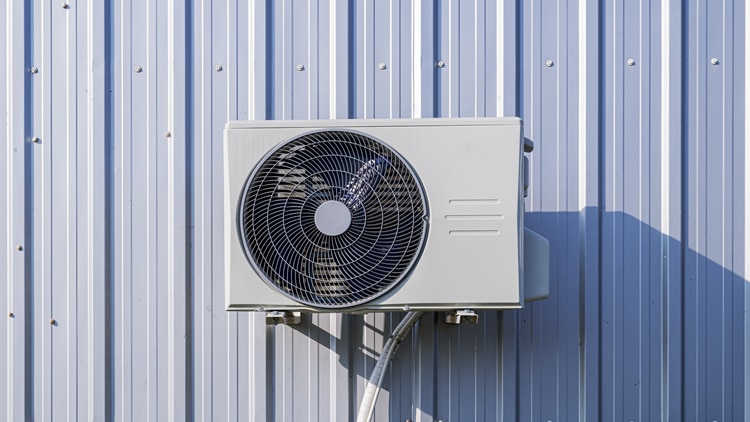

Is a One-to-Two Split Air Conditioner Good? Complete Analysis and Purchasing Recommendations
As urban residential space design becomes increasingly narrow, especially in densely populated cities like Hong Kong, many families face the challenge of limited window space in "many rooms, few windows." Effectively installing air conditioning has become a significant issue. The "one-to-two split air conditioner" is one solution to meet the cooling needs of multiple rooms, and its market interest continues to rise. However, is this type of system truly suitable for the average household? This article provides a comprehensive analysis of its operating principles, advantages, disadvantages, applicable situations, and purchasing recommendations to help you make a more informed consumer decision.
What is a One-to-Two Split Air Conditioner?
The "one-to-two split air conditioner" is a type of multi-split air conditioning system, characterized by a single outdoor unit connecting to two indoor units simultaneously. Unlike traditional "one-to-one" split air conditioners, the one-to-two system allows each indoor unit to independently control temperature and airflow, operating simultaneously or at different times, providing individual cooling effects for different rooms. This system is widely used in residential units where space is limited and requires cooling for two rooms at the same time, such as two-bedroom units or open-plan units with a sleeping area.
Advantages of the One-to-Two Air Conditioning System
1. Saves Exterior Wall Space
Since only one outdoor unit is required, compared to installing two separate "one-to-one" air conditioners, it significantly reduces the occupancy of window or exterior wall space.
2. Independent Operation of Indoor Units
Users can turn on one indoor unit as needed or operate both simultaneously, adjusting temperature and airflow independently.
3. High Energy Efficiency
Most one-to-two systems use inverter technology, which automatically adjusts output power based on actual load, helping to save electricity costs in the long run.
4. Flexible Installation
It simplifies installation routes, reduces the number of exterior wall openings, and lowers construction difficulty and time costs.
Potential Disadvantages of the One-to-Two Air Conditioning System
1. Larger Outdoor Unit Size
The outdoor unit of a one-to-two air conditioner is usually larger and heavier, requiring prior assessment of the window sill or installation platform's weight capacity and dimensions.
2. Higher Installation Costs
Increased construction time and complexity lead to higher installation costs compared to regular split air conditioners.
3. Distance and Configuration Limitations
There is a limit to the length of the piping between indoor and outdoor units; excessive length can affect cooling performance. Additionally, if the two rooms are too far apart, effective operation may not be possible.
4. Concentrated Repair Risks
Since the two indoor units share the same outdoor unit, a malfunction in the outdoor unit can affect the operation of the entire system.
When is it Suitable to Choose a One-to-Two Air Conditioner?
- The residential unit is designed with two rooms that are adjacent and do not have sufficient space for two outdoor units.
- The original design of the unit reserves space for only one outdoor unit, making it impossible to install a second air conditioning unit.
- Users with high requirements for saving space and outdoor aesthetics.
- Need for quiet operation and energy-saving effects, such as when air conditioning is used in children's rooms or elder rooms.
Purchasing Recommendations and Considerations
1. Measure Dimensions and Space
Before purchasing, be sure to measure the dimensions of the window sill or air conditioning platform to confirm that the outdoor unit size is suitable.
2. Pay Attention to Refrigerant Pipe Length Limitations
If the two rooms are too far apart, it may lead to installation issues or significantly reduced air conditioning efficiency.
3. Choose Inverter Models
This helps save energy and avoids temperature fluctuations caused by the strong switching of the air conditioning unit.
4. Brand and Maintenance Services
It is advisable to choose a reputable brand with good after-sales service, such as Panasonic or Daikin.
5. Budget Considerations
The cost of a one-to-two system and installation fees are generally higher, requiring users to weigh investment returns against actual needs.
Recommended Models for Reference
- Panasonic Slim One-to-Two Inverter Air Conditioner Series: Designed for single window sill spaces, combining energy-saving and quiet operation, well-received by residential users in Hong Kong.
- Daikin Multi-Split Series: High efficiency, long compressor lifespan, suitable for long-term use.
- Carrier Multi-Split Series: European and American brand, fast cooling speed, suitable for large spaces.
The one-to-two split air conditioner offers an ideal solution for residents facing "many rooms, one window sill." Its flexibility, energy efficiency, and aesthetic practicality make it a worthy consideration. However, before purchasing and installation, it is essential to assess actual space, budget, and usage needs thoroughly and communicate fully with professional installation technicians. For users needing simultaneous cooling for two rooms while limited by exterior wall space, a one-to-two air conditioner is undoubtedly a choice worth considering.

